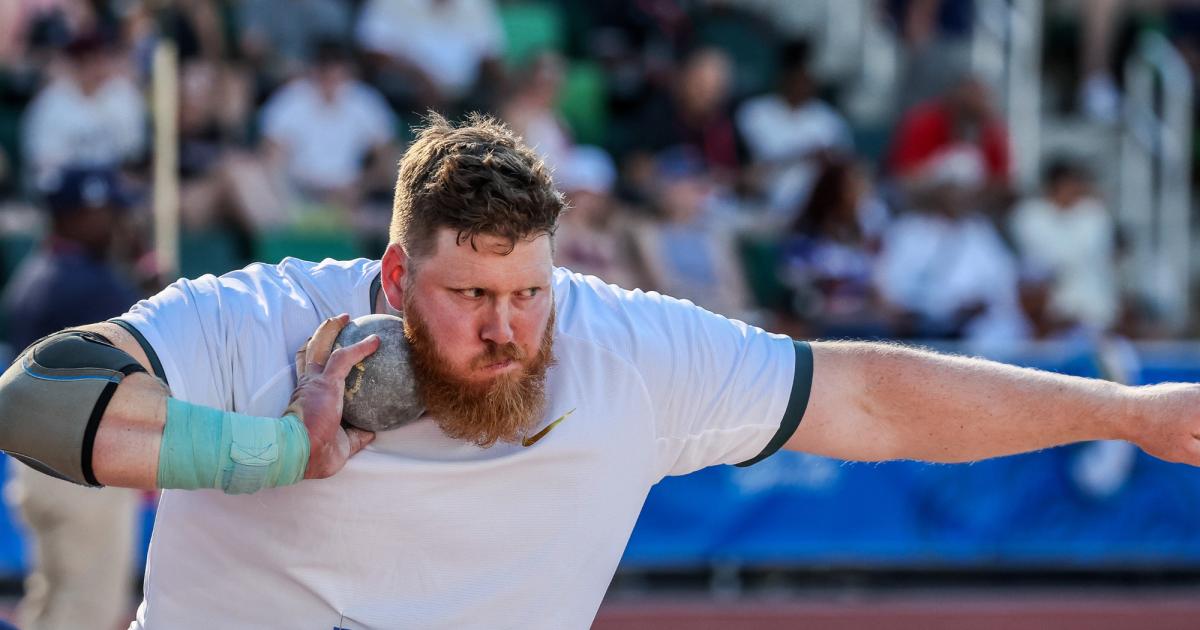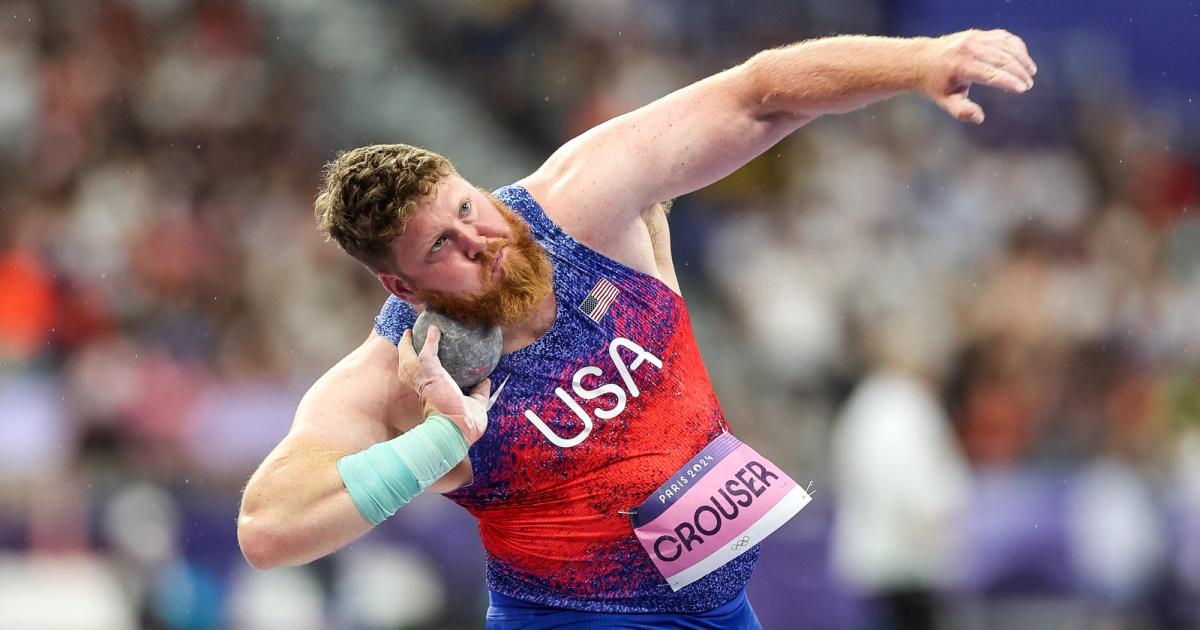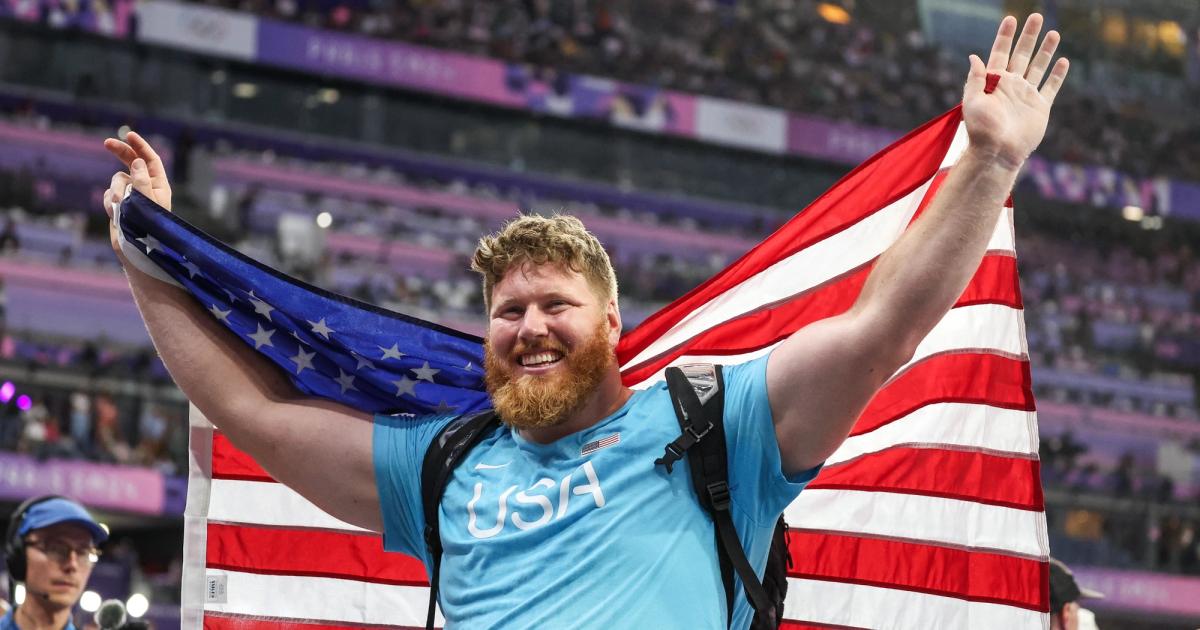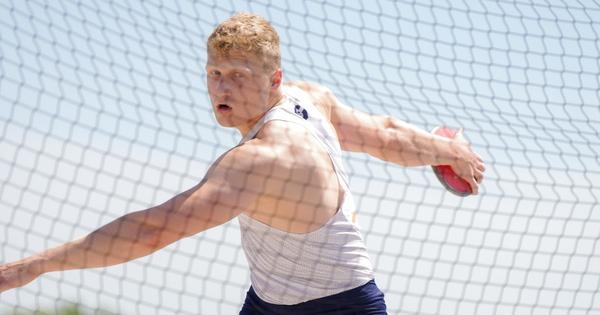By Paul Hof-Mahoney
April 24, 2025
The first edition of Ryan Crouser’s World Shot Put Series went down last night at the Drake Relays in Des Moines, Iowa, and the best way to describe it is that it rocked. Crouser wanted the WSPS to be an entertainment product, as it wasn’t a World Athletics recognized competition and didn’t measure exact distances, and boy did it deliver on the entertainment value.
For those of you who weren’t fortunate enough to be able to watch the competition live (you can still catch the replay here), the competition was essentially shot put in a pole vault format, with the athletes trying to clear successive, increasing distances. Two misses at any one distance and you’re out, save for one “challenge” attempt athletes can use at any point in the competition.
I’d be lying if I said I didn’t have a tweet planned out in my head when the competition started about how Ryan Crouser had already won everything else so he had to invent a new competition format for him to dominate too… and then he finished fifth! I’ll get more into the weeds of what went right and wrong for WSPS in a bit, but the success of the event was really fueled by the excellent competition and a surprising outcome.
A field of nine of the best shot putters in the world (plus a handful of area collegians) came together and put on a show. As the competition went down to the wire, it was World Indoor medalists Roger Steen and Tripp Piperi locking horns at the 74-foot line, both throwing beyond their official PBs with 73-foot clearances the round earlier (Piperi also bested his official PB with his 72-foot clearance). With both men failing at the final distance, Steen brought home the title belt on countback, given his four total misses to Piperi’s six.
The good:
- The format: Even the staunchest anti-field event track fans usually say that pole vault is their favorite of the jumps and throws. Sure, Mondo Duplantis plays a big role in that, but the high stakes feeling inherent in every attempt makes it increasingly impossible to pull your eyes away from the competition the higher and higher the bar goes. Crouser had said his goal for WSPS was to bring excitement and value to every throw, something that can be lacking in a typical six-throw competition. That was a success from second-attempts at early distances all the way through Steen’s final heave that came up inches shy of 74 feet.
- Challenge flag and chains: I’ll be completely honest with you, this was the thing I was most skeptical about when details of WSPS were first announced last month. I thought that these would be corny gimmicks that tried too hard to liken shot put to the NFL, and they were kind of unnecessary. I’m happy to report I was wrong on both fronts. The challenge flags, which actually were the same red flags you see in football, were electric. You knew it was coming after an athlete missed their second attempt, but every time it came out you were still kind of like, “Oh damn, it’s about to go down.” The throwing of the flag gave athletes an opportunity to show some personality (Josh Awotunde provided my personal favorite of the evening), and the ensuing attempts typically delivered. Six out of nine challenge attempts were successful, including epic 72-foot bombs from Steen and Piperi. For those that failed their challenges (Awotunde, Chuk Enekwechi, and Crouser), it counted as two misses which created some fun countback math.
As for the chains, it’s just a fun, very visual way of measuring things. They weren’t used a ton, but the tension in the crowd was palpable as they waited for confirmation and then exploded when they had seen the ball was clear of the sticks (Best example: Steen’s first-attempt clearance at 73-feet).
- The atmosphere and crowd: It will be interesting to see how this carries over into other WSPS events, because Drake Relays already has such a rich throwing tradition and is one of the most established meets in the country, but everything about the energy inside the fieldhouse last night was awesome. The format made it immediately evident to the whole audience whether to cheer or sigh at an attempt, and they were perfectly responsive. All the athletes could talk about was how much they fed off the crowd, and the energy shone through even on the livestream.
- The pace: The competition ended up being 77 minutes from the first professional attempt to the last, but it felt like it went by way quicker than that. Without the need to measure each and every attempt, there was an unbelievably quick turnaround between throws. The nine professionals got through their first attempts at 60 feet in a shade over three-and-a-half minutes, which is something you’d never see in a standard format. It was a way of speeding up the competition, but it wasn’t a boring disaster like the mess that was the experimental javelin competition at the Fribourg Track Lab in September. Athletes had way more attempts than they would in a typical competition (Piperi ended his night with 13 throws, 11 for Steen), and yet the athletes still delivered even late into the competition.
- The broadcast: Brad Wells and Dan O’Brien in the booth and Stam Scarvelis on the field did an excellent job on the broadcast. They benefited from there not being a ton of downtime to fill between throws (take notes, Grand Slam Track), but Wells and O’Brien brought entertaining and insightful commentary all throughout the show, which was also one of the benefits of only having a nine-athlete pro field. My personal favorite bit was when O’Brien basically accused the competition of being rigged in Crouser’s favor because his wife was the field judge. As for Scarvelis, her mid-competition interviews fit perfectly in a format like this and served as a great way to highlight the athletes’ perspective on the environment and the format in real time.
Areas for improvement:
- Results: My biggest gripe from last night is that there wasn’t any way to keep track of the results other than what Wells and O’Brien would say on the broadcast. A live results page would’ve been nice, but also a tracker on the broadcast that could pop up between attempts, like we see in pole vault or high jump competitions, would make total misses easier to track and it also would help the audience to know who still has their challenge left, which was a point of confusion last night even for the broadcasters.
- Where were the women?: The women’s side of the sport was notably absent from this event, but on the Throw Big Throw Far podcast earlier this month, Crouser said he plans on changing that. The next event on the WSPS schedule looks to be at Sorinex Summer Strong in South Carolina on May 16th and 17th, and the goal is to have an elite women’s field there. There’s a good chance that back-to-back Diamond Leagues in China over the next two weeks featuring women’s shot put played a factor in there not being women in the field last night.
If there is to be a women’s field next month, they’ll be throwing an 8lb shot instead of the typical 4kg/8.8lb shot, and they’ll be competing in the same field as the men. Crouser’s idea behind that is leveling the playing field with the women’s implement being half the weight of the men’s, like you see in discus where the men and women throw generally the same distance.
Taking in everything, it’s impossible to say this pilot event was anything but a success. On a random Wednesday night, thousands of people tuned into a handful of streams to watch big guys throw heavy balls far. The format was more exciting than I think even Crouser could have expected, and now the proof of concept is out there. With a few very minor tweaks, this could become a staple of shot putting, and we saw last night that the bones are more than good.
Finally, it might merit discussion of the viability for this format to be translated to the other field events, but that’d take someone much smarter than me to envision fully. Obviously the format is exciting, so I think it’d be worth a shot to test this with the long throws and horizontal jumps.

Paul Hof-Mahoney
Paul is currently a student at the University of Florida (Go Gators) and is incredibly excited to be making his way into the track and field scene. He loves getting the opportunity to showcase the fascinating storylines that build up year-over-year across all events (but especially the throws).




